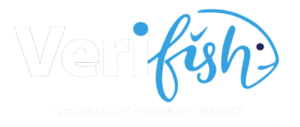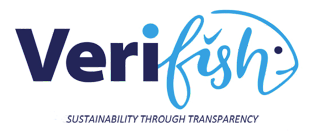
Vessels
The Verifish software allows you to meet responsible fishing, sustainability and quality standards through your phone, tablet or PC. The system reduces cost, reduces paperwork and gives you a cloud based central point for your vessel documents and records.
Freezer or factory trawlers can use the software to implement and maintain their legal requirements (HACCP) for food safety and quality, in one easy to use system.
Fishery Improvement Projects
Fishery Improvement Projects provide a platform for fishermen, seafood buyers and suppliers to develop a strategy to improve a specific fishery by considering better policies and management over a given time period.
To register for one of the FIPs please see below.
Read on for further information
A number of Irish Fishery Improvement Projects or FIPs have been established. Those that are already up and running include Brown Crab, Prawn, Whitefish, Albacore Tuna and Celtic Sea Herring.
What are FIPs?
FIPs are an industry-led approach to improving sustainability of specific fisheries in an ever more demanding marketplace. They are based on co-operation between all sectors in the fishery chain, from catching to processing to retail in collaboration with NGO’s who wish to see fishing continue while progress towards sustainability is made. Examples of this progress could be the use of more selective gear or the development of effort management plans.
A FIP may be an intermediate stage towards getting a third-party certification, such as MSC, or it may be a stand-alone initiative to improve a fishery. A key characteristic of all FIPs is that the industry is taking control of their destiny and playing a key role in their own future.
Why should I join?
There are two main strands in how FIPs can create positive outcomes for fishermen. The first is in relation to stock improvements and many FIP actions are aimed at improving the state of target stocks. An example of this is the move by the Irish Brown Crab FIP to reduce amounts of white crab being landed.
The second main benefit strand is in improving access to markets and getting a better return for catches. Whether we like it or not the market for seafood is increasingly demanding in terms of demonstrating fishery sustainability. Real progress has been made in the market where fisheries with FIPs have been accepted by major retail chains such as Walmart and Aldi which were previously focussed on MSC. The number of FIPs underway internationally is growing all the time and Irish seafood competes in the market with these fisheries.
Irish POs and co-ops and a growing number of buyers and processors are participating in FIP meetings along with fishermen. They are recommending that vessels should join any FIPs relevant to the species they are landing.
What am I signing up to?
All FIP members including fishermen, processors or retailers are required to sign up to a set of membership rules including provision of details to enable traceability. The main undertaking for fishermen and vessel owners is to provide catch details in relation to product from the FIP which may include quantities landed, areas fished, gear fished and the buyer of the product. Fishermen may also be required to participate in initiatives such as data provision in order to improve scientific knowledge of stock status or to verify progress towards CFP Maximum Sustainable Yield goals.
Likewise agents and processors who are FIP members must undertake to supply data on FIP product including vessel details, quantities landed, processed quantities and where the product was sold.
FIP workplans generally include a summary of the key issues the fishery is facing and some first steps towards addressing those problems. Examples of workplan tasks include the collecting of scientific information by fishing boats on fish stocks or on the use of more selective gears.
If you are interested in looking at the 2019 FIP workplans prior to joining you can access them via the following links
http://irishbrowncrabfip.ie/workplan/
http://irishprawnfip.ie/workplan/
http://irishwhitefishfip.ie/workplan/
http://irishtunafip.ie/workplan/
Information available to Members:
When you join you will automatically receive access to information on 2019 workplans, minutes of previous meetings, membership rules, MSC pre-assessment summaries and reports. Members will also receive regular updates on progress towards workplan goals and any other developments.
Additional information is also available for each FIP including summaries and full reports for MSC pre-assessments. From a fisherman’s, processor’s or retailer’s perspective these reports indicate where work needs to be done in order to demonstrate that the fisheries are on the road towards being sustainably managed.
Fishery Improvement Projects
All targeted fishing for crab is undertaken with pots or creels set in ‘strings’ of 25-100. The pots are composed of a metal frame supporting a wide mesh netting. Entrances are designed mainly as so called “soft-eyes” which consists of a flap of netting which the crab can push upwards as it enters the pot and which then closes. Some pots may have hard eye tope entrances and may have a double chamber. However such variations are exceptions in the targeted crab fishery and are more likely to be used locally in the lobster fishery. Gear is baited with a variety of fish species and is soaked for 24-72hrs although exceptionally, during for example poor weather, they may be soaked for longer periods of time.
CONTACT US

Providence House,
Unit H1,
South Link Business Park,
T12CK77, Ireland
10, Dorrance Street,
Suite 700,
Providence, Rhode Island,
02903, USA
IE: +353 21 245 5670
US: +1 401 6484 852
IE Mobile: +353 87 2591376
Email: info@veri.fish
REGISTER
LATEST NEWS
Verifish Blockchain technology goes live with Aldi
Aldi Ireland becomes the first retailer to complete trial with Bord Iascaigh Mhara’s new fresh fish traceability system Aldi is the first retailer in Ireland to test blockchain technology successfully to validate its corporate buying policy for organic and sustainably...
A report on FIP’s performance globally
A recent report on the performance of FIP's globally has some interesting results for our FIPs https://oursharedseas.com/fipreview/ A recent report on the performance of FIPs globally has some interesting results for our FIPs (https://oursharedseas.com/fipreview/)...
RESEARCH & DEVELOPMENT
European Space Agency (ESA) and AquaEye: Marine Applications Ltd has just completed our latest project with ESA AquaEye. The project involves the installation of sensors on participating certified aquaculture production units which transmit data in relation to water quality through satellite and GPRS technology to a cloud-based software platform Users are then able to access the appropriate data based through a user friendly GUI.
